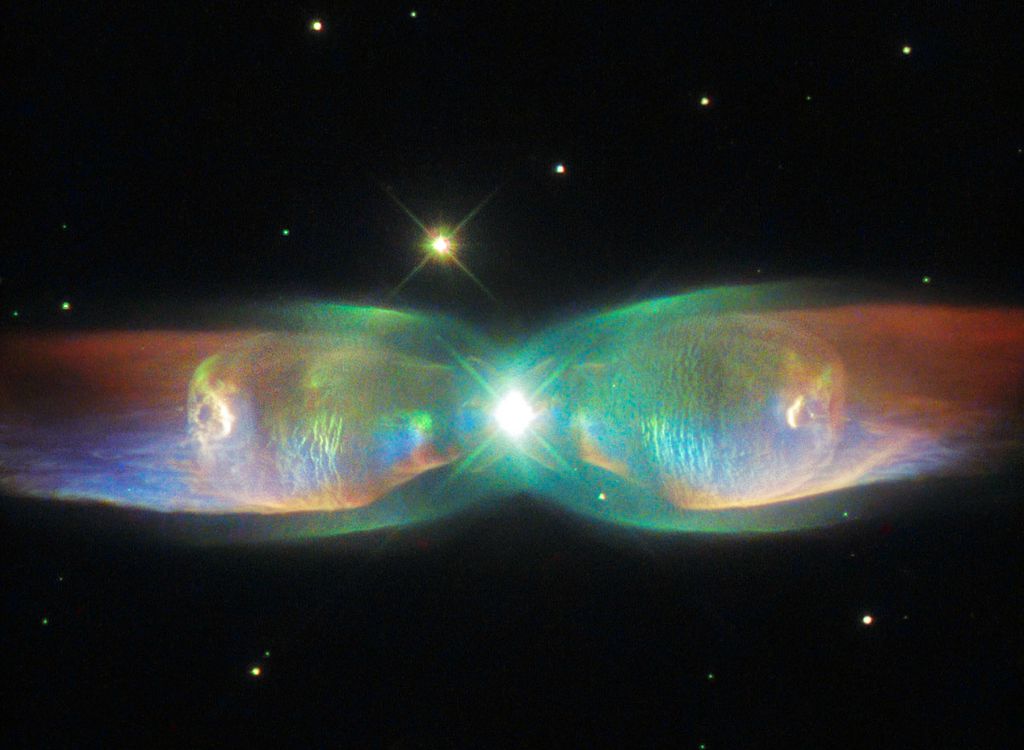

Planetary nebulae, which come together following the death of medium-mass stars (roughly equivalent to the Sun in mass, sometimes a bit heavier), are often expansive, but rarely are they this exquisitely detailed. Called the Twin Jet Nebula (otherwise known as Minkowski 2-9, M2-9, Minkowski’s Butterfly, PN M2-9, or the Wings of a Butterfly Nebula), it can be found approximately 2,100 light-years from Earth toward the constellation of Ophiuchus.
In a new image from the Hubble Space Telescope, the structure of the Twin Jet Nebula is expressed in unprecedented resolution. The colors are also stunningly vivid, helping highlight the nebula’s key features—especially the intricate shells, and the knots of gas that continue to expand outward from the source (or sources, rather): one dying star, and a dense body called a white dwarf. Though small, the dwarf star remains incredibly hot and energetic, which provides the nebula with the proverbial match it needs to ignite.
The jet itself is bipolar, which is an unusual feature in and of itself, though its far from unique.

Basically, astronomers believe that the orbital mechanics between the pair—one weighs between 0.6 to 1.0 solar masses, while the other weighs as much 1.0 to 1.4 solar masses—has sculpted the gaseous material into bipolar, or two-lobed, outflows. Moreover, the gas is hurtling through space at speeds exceeding 621,371 miles (one million km) per hour.
More from the ESA:
It is believed that a white dwarf orbits its partner star and thus the ejected gas from the dying star is pulled into two lobes rather than expanding as a uniform sphere. However, astronomers are still debating whether all bipolar nebulae are created by binary stars. Meanwhile the nebula’s wings are still growing and, by measuring their expansion, astronomers have calculated that the nebula was created only 1200 years ago.
Within the wings, starting from the star system and extending horizontally outwards like veins are two faint blue patches. Although these may seem subtle in comparison to the nebula’s rainbow colours, these are actually violent twin jets streaming out into space, at speeds in excess of one million kilometres per hour. This is a phenomenon that is another consequence of the binary system at the heart of the nebula. These jets slowly change their orientation, precessing across the lobes as they are pulled by the wayward gravity of the binary system.
The two stars at the heart of the nebula circle one another roughly every 100 years. This rotation not only creates the wings of the butterfly and the two jets, it also allows the white dwarf to strip gas from its larger companion, which then forms a large disc of material around the stars, extending out as far as 15 times the orbit of Pluto! Even though this disc is of incredible size, it is much too small to be seen on the image taken by Hubble.